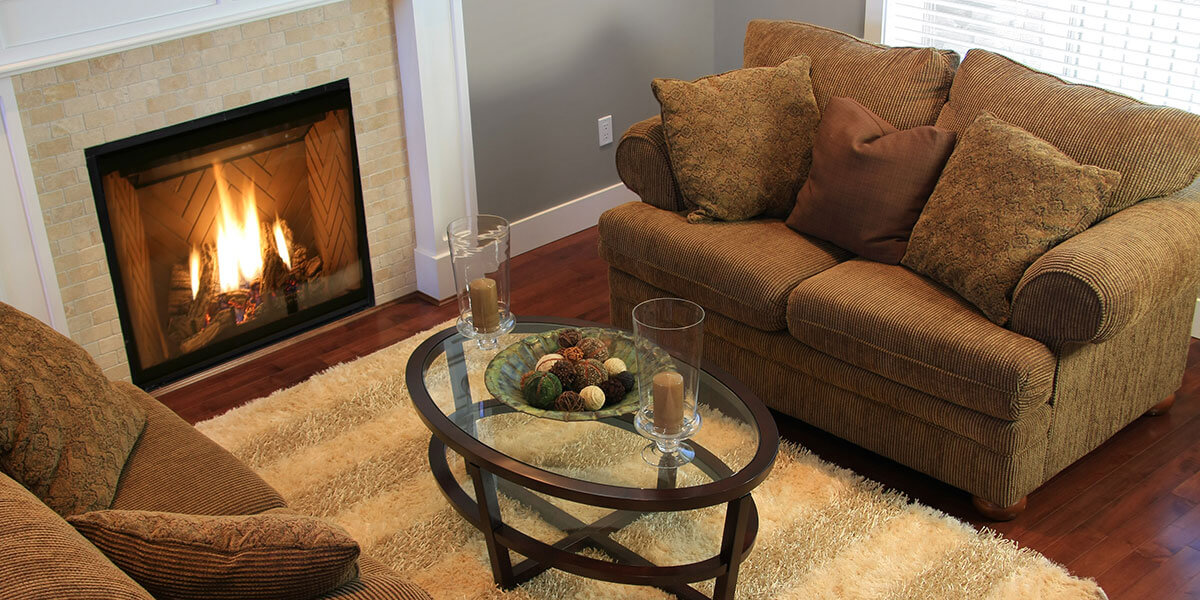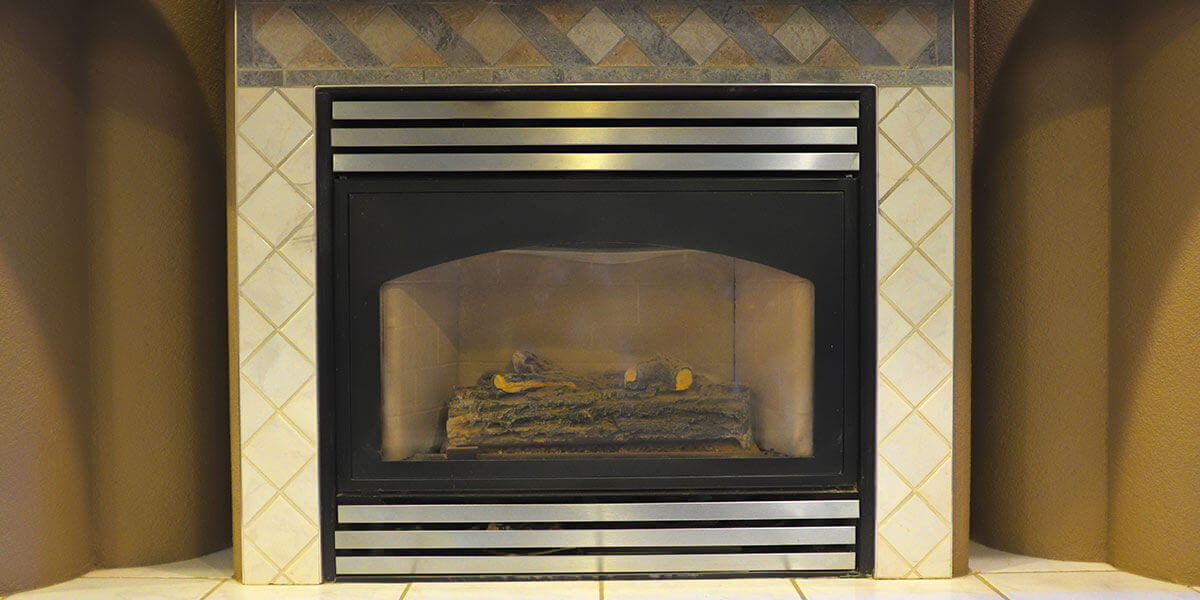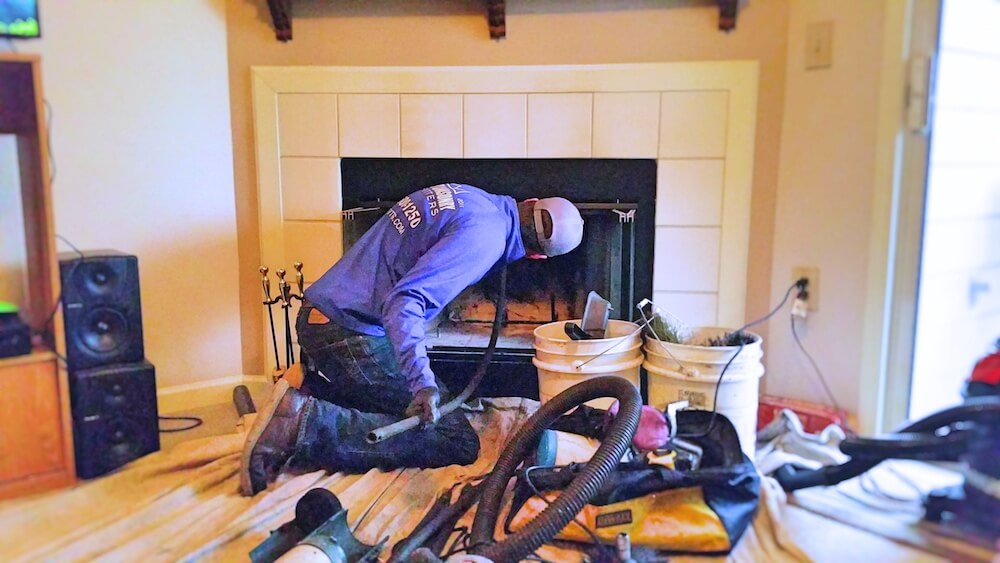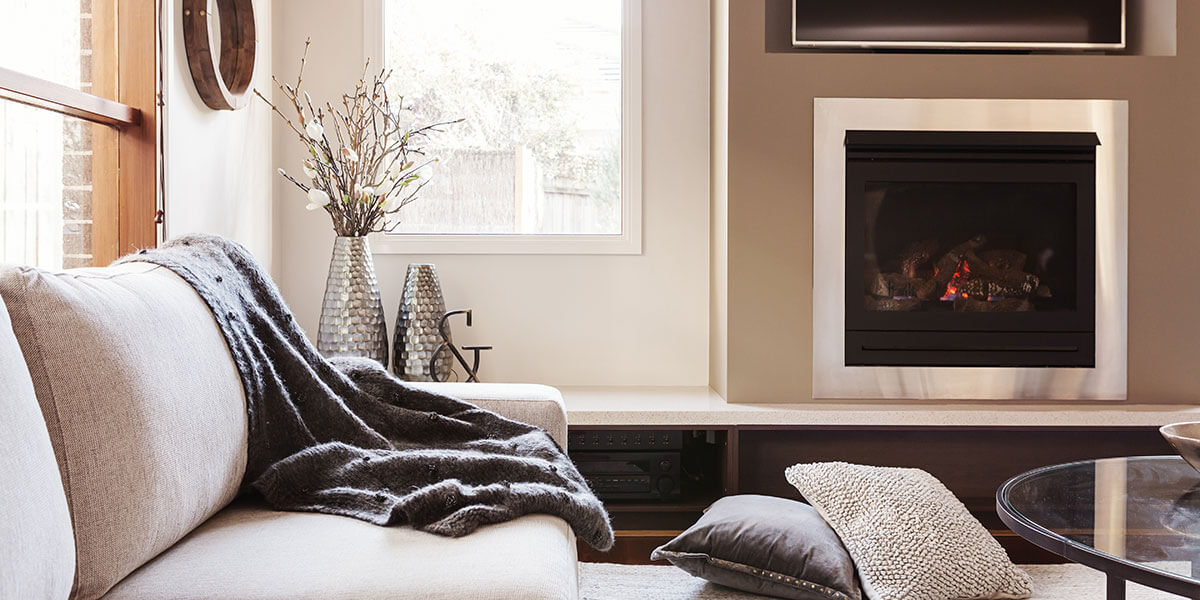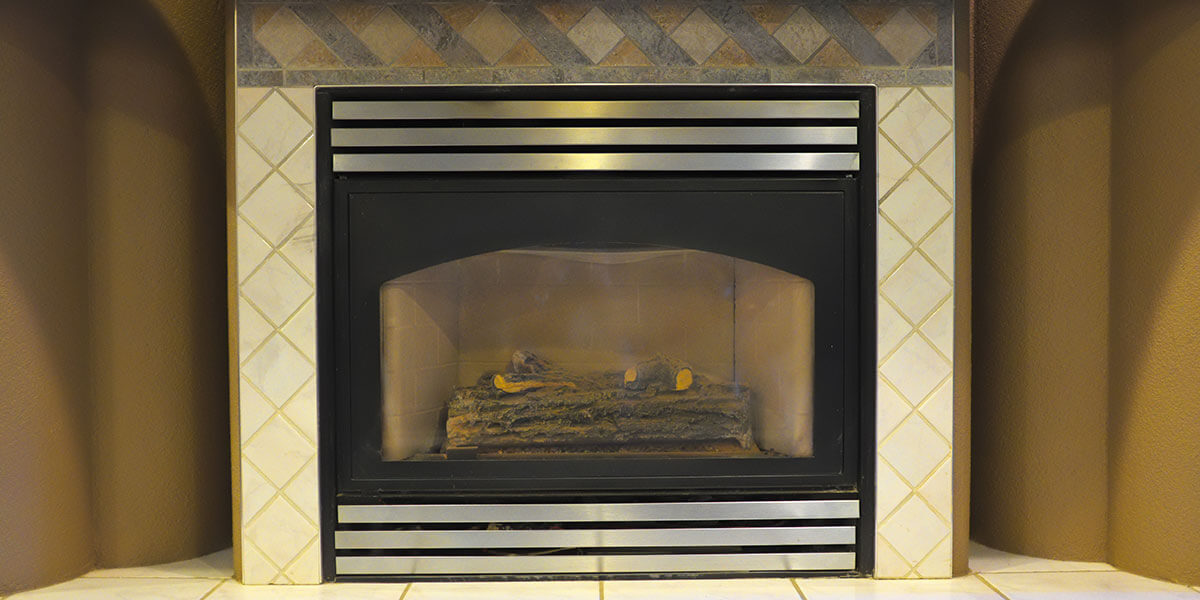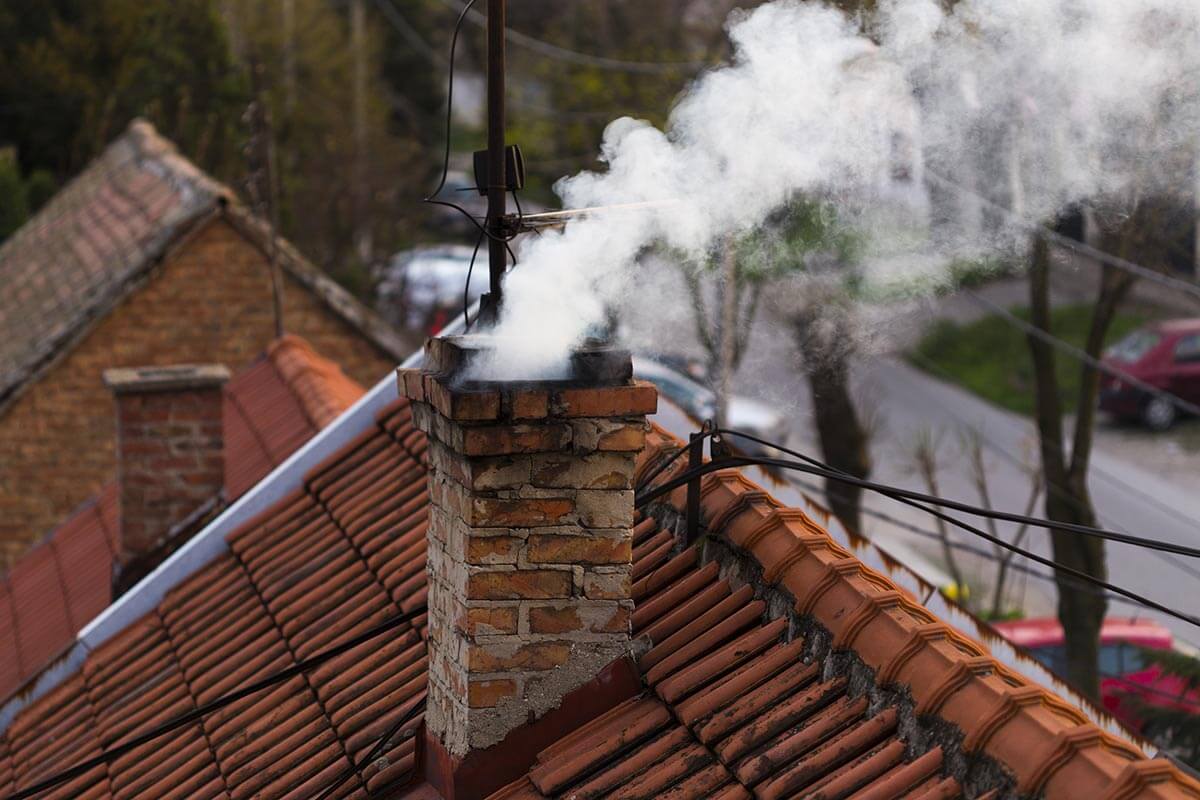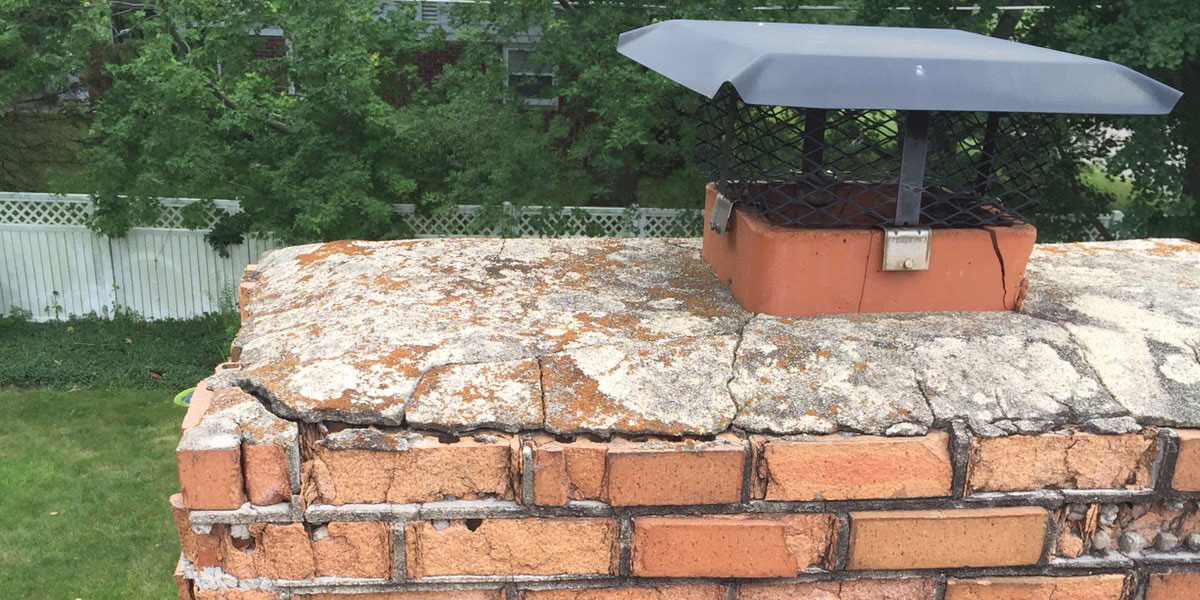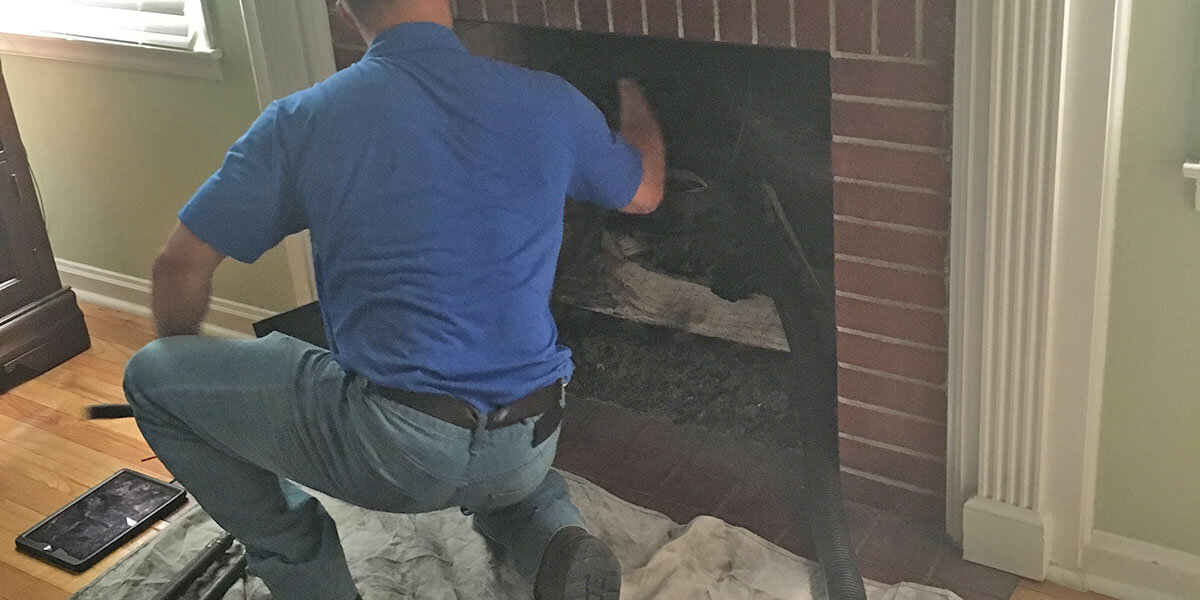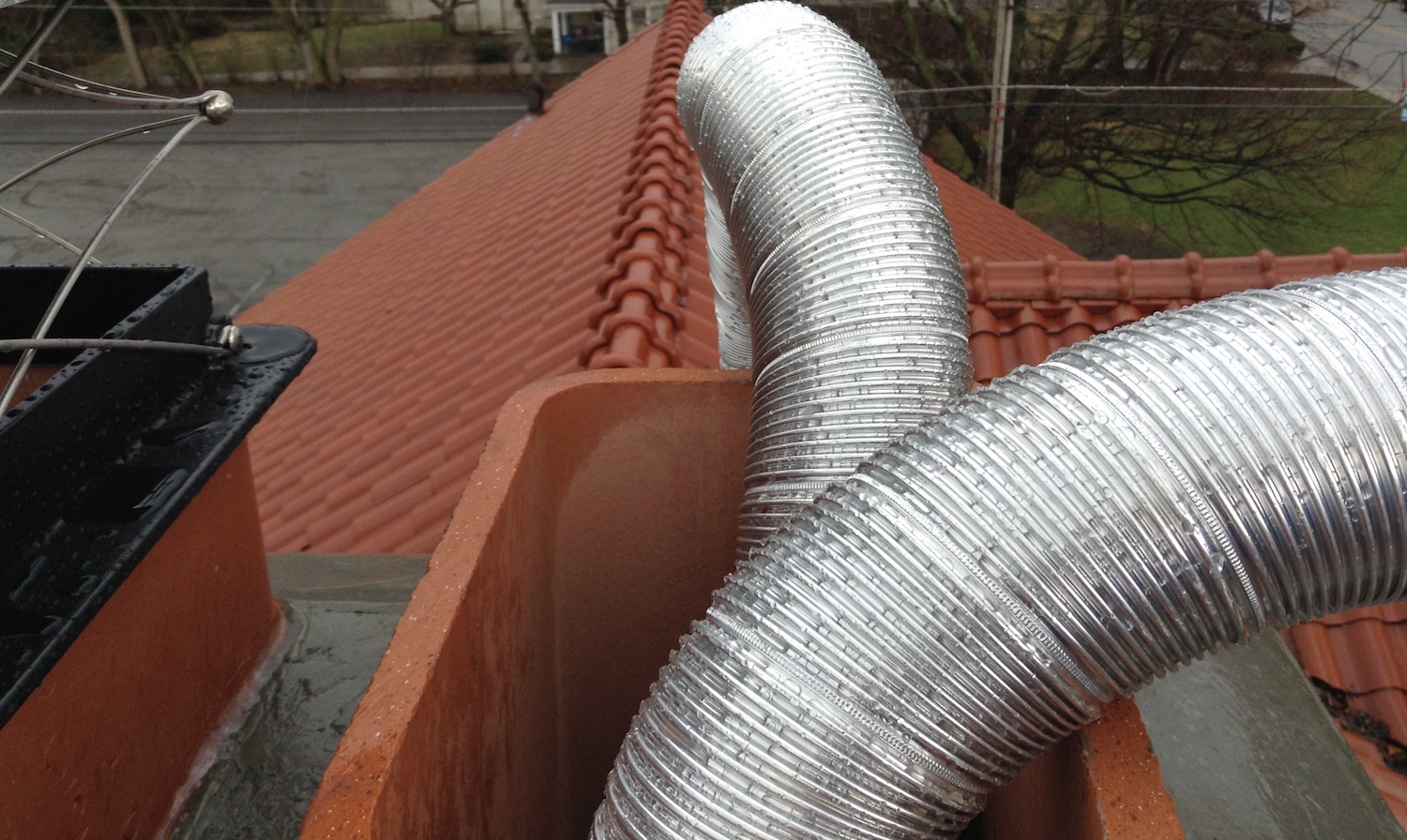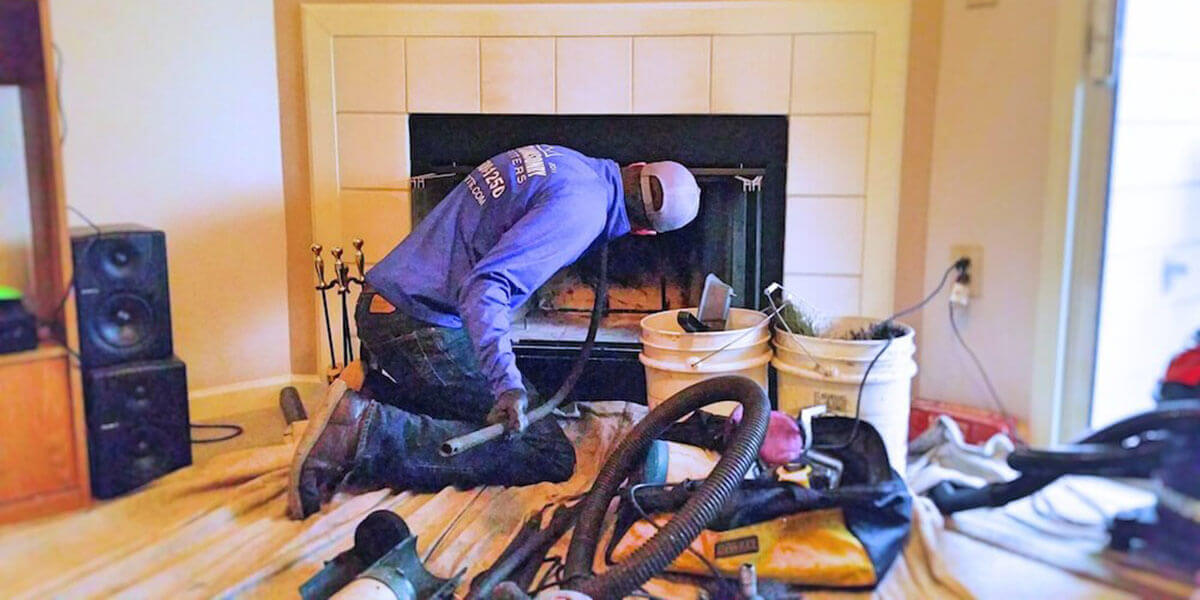The Advantages and Disadvantages of a Gas Fireplace
Fireplaces are a top amenity among homeowners. Gas fireplaces, in particular, have become more popular nowadays. They are safer and environmentally friendly. Below are some of the advantages and disadvantages of a gas fireplace that can help you determine whether they are right for you.
Advantages of a Gas Fireplace
Low maintenance
A gas fireplace needs minimal cleaning and maintenance. With a gas fireplace, there is no need to remove ashes and clean up debris from because it won’t produce ash. Cleaning should ideally be done at least once every year.
Offer efficient heating choices
With a gas fireplace, you can easily zone heat if you have the appliances installed throughout your house. You will be able to switch off the central heating system and turn on a gas fireplace in any chosen room.
Easy and convenient
You can quickly start your gas fire by touching or switching on a remote control or a thermostat. Just like that, you will have a magnificently warming heat coming for the gas fireplace.
However, before you choose the right model, make sure to get one that has a pilot light to enable you to light the fireplace even in the occurrence of a power outage.
Safer and environmentally friendly
A gas fireplace burns natural gas or propane and releases fuels into the atmosphere. The emissions are very low.
No burning restrictions
There have been several states that have banned wood burning fireplace; however, there has not been any ban on gas fireplaces.
Cost-effective
Installing a gas fireplace in your home is cheaper. Apart from saving on heating costs, you can choose a direct vent gas fireplace fitted with an IPI (Intermittent Pilot Ignition) system that has a pilot light always lit to use the fireplace. This, in turn, reduces more than half of the gas used. A vented gas fireplace can easily be converted to wood-burning fireplaces.
Disadvantages of a Gas Fireplace
- Propane is an expensive heating fuel. You will spend more on gas pellets than you would on wood to produce the same amount of heat.
- The cost of installing a gas fireplace may be higher especially if you want a gas line installed.
- No ambiance. There are no crackling sounds or smell produced by aromatic firewood.
- To install a gas fireplace in your home, you will need a natural gas connection or propane availability. Without these things, your options may be limited.
Need Professional Gas Fireplace Installation Services?
Are you’re looking for an efficient way to heat up your house? You will struggle to find a better choice than a gas fireplace. Choose the right gas fireplace and have a Indianapolis, IN professional chimney technician from B+E to install, inspect, maintain and clean your gas fireplace.
Beginners Guide to Gas Fireplace Maintenance
A gas fireplace is a lovely addition to any home. However, many people have no idea that just like wood-burning fireplaces, a gas fireplace needs maintenance too. With continuous usage, a gas fireplace gets dirty. To make sure that the gas fireplace functions properly, you should concentrate on gas log maintenance as well as the gas fireplace maintenance. Gas fireplace maintenance can be categorized into three groups: safety inspection, gas fireplace cleaning, and replacing the batteries.
Safety inspection
Compared to a wood burning fireplace, gas fireplaces are more convenient. However, some problems can arise, and that is why you should schedule a fireplace inspection. This safety inspection is to make sure that your fireplace is working safely and efficiently. A trained technician will check the burner, gas pressure and ensure that there are no leakages in the system. Never try to complete a safety inspection procedure on your own. Let a trained technician do it!
Gas fireplace and gas log cleaning
Over time, debris accumulates on the doors, inserts and the interior fireplace. Apart from improving the beauty value of your gas fireplace, cleaning increases the safety of the gas fireplace by eradicating fragment buildup. A fragmented and scratched glass should be cleaned or replaced. Deteriorating gas logs should be cleaned at least once a year. Use a soft brush to brush away any debris from the logs.
Never wash or even wet wipe the logs as they can fade or damage the finishing. Chimneys too need sweeping at least once annually. Letting a dirty vent go for a long time poses a significant threat to everyone residing in the house. Your local dealer will give you an owner’s manual that contains all the instructions for cleaning your gas fireplace.
Replacing batteries
A good quality carbon monoxide detector is necessary if you have invested in a vent – free gas fireplace. On the other hand, you can have your local dealer install oxygen –depletion sensors in your gas fireplace. This device is called the ‘safety pilot,' which spontaneously shuts the gas off if the temperatures in the hearth are too cold or if there has been much carbon monoxide accumulation. All these devices use batteries which should be replaced at least twice a year.
Faulty Internal gas fireplace parts like the pilot light can become hazards. Schedule an inspection at Gas Fireplace Maintenance, Indianapolis, IN before lighting it up. To get professional help, visit Brick + Ember Outfitters or call (615) 645-3545 today!
What Is Involved in a Chimney Sweep?
We sometimes get questions about why it is important to get your chimney swept. Regular chimney sweeps offer many benefits, including preventing a chimney fire, protecting your health and avoiding smoke damage. Chimney sweeps will clean your chimney, pipes, fireplaces and ducts to ensure that your chimney is clear of debris or other obstructions that could catch fire or prevent the smoke and other gases from venting properly.
The Importance of Cleaning your Chimney
Everyone enjoys a cozy evening in front of the fireplace. But before you throw a log on, make sure your fireplace is safe for you and your family. Cleaning the chimney helps to prevent soot fires.
If your fireplace has an excessive amount of soot, you are at risk of exposure to poisonous gases that are bad for you and the environment. Carbon monoxide, a gas produced anytime fuel is burned, can cause harm even at low levels.
If this gas is allowed to buildup in your fireplace, the consequences could be deadly. Having your chimney examined and swept helps keep your flue clear and functioning properly.
How Often Should you get the Chimney Swept?
How often you should clean your chimney depends on how often you use your fireplace. The National Fire Protection Association recommends that chimneys, fireplaces and vents are inspected annually to identify signs of deterioration and other potentially dangerous conditions.
What to Expect
On average, a thorough cleaning should take between 45 minutes to 1 hour. However, every flue is different and may vary depending on the condition of your fireplace and chimney. Prepare for your appointment by ensuring that the technician has easy access to the area. This means removing any décor or clutter that may be in the way.
Upon arrival, your technician will assess the condition of your chimney. After surveying the job, he or she will secure the work area and lay down a drop cloth to protect your home from ash, soot, and dust.
Your sweep will then perform a routine cleaning, using a brush to clean the interior of your flue. The cleaning may be done from below or from your roof.
When the technician is finished, all of the soot will be removed from your system using a vacuum or shovel. Your sweep will then report on the condition of your fireplace and chimney and inform you if there are any additional potential hazards that were found.
What Services does Brick + Ember Outfitters Offer?
In addition to providing chimney sweep, chimney relining, and restoration services, Brick + Ember Outfitters performs masonry repair; fireplace maintenance and replacement; design services and more! You can view our full list of services HERE.
Ready to Make your Appointment?
Brick + Ember Outfitters services the greater Indianapolis area, now including Carmel and Fishers. Our offices are open Monday through Friday from 7:00 AM – 5:00 PM. If you would like to request an appointment, please call us at 317-500-1250 and a member of our team will be happy to assist you.
6 Questions to Ask Before Installing a Gas Fireplace
Put the word out on the street that you hope to install one, and you will come to quickly realize that gas fireplace installation is all the rage in these modern, eco-friendly times. Because they burn cleaner, require less maintenance, and don’t utilize wooden logs (which is sure to disappoint the children), many new homes constructed with a gas fireplace.
Now that your interest is piqued, undoubtedly you have some questions. Maybe you have many questions but aren’t sure which to ask first. Perhaps, even, you don’t have any questions but, after reading this, you feel you probably should. Consider the following a template, a quizzical kickstarter, for what to ask when you decide to make the leap to the state of matter that some find to be the new state of fireplaces.
1. What’s So Great About Gas Burning Fireplaces anyway?
The benefits mentioned above are but the tip of the iceberg, if you will. However, just as with a traditional wood burning fireplace, a gas fireplace will have its upsides and downsides. So, how is a homeowner to decide? Naturally, it is best to stop into a showroom to look at the selection. There, you can ask a gas fireplace expert to help you determine what type of fireplace will best suit your needs--whether you want your long cold winter nights warmed with ease and convenience, or if you’d prefer to send little Junior out for kindling.
2. Seems Easy, But Will a Gas Burning Fireplace Work for My Home?
So, you’re sold on the many benefits afforded by choosing to go wood free, now what? It’s really important to pick out a style that will suit the design concept and architecture of your home. Going gas is a big commitment, so it would behoove you to have an idea of what you want ahead of making your decision. Browsing the internet is fine but it’s always best to stop by the showroom of a local professional as they are going to have a good idea of what is popularly used in homes in the area.
3. I Like It, but How Much is This Going to Cost Me?
This is where we get down to brass tax. Different fireplaces, obviously, are going to have different price tags attached. Finding one you love that aesthetically fits within your home is hard enough without factoring in the money.
Does your dream fireplace fit your budget? Can you go up and, if so, by how much? If not, is there a different style that can fit your budget while still standing out as the centerpiece during those famous winter holiday gatherings? A little leg work upfront will go a long way in determining a figure you and your gas fireplace specialist can work with.
4. Works for My Budget, How Long is it Going to Take to Install?
Dollars are one thing. Discomfort to your family is quite another. Different fireplaces are going to have different time frames, when it comes to installation. Additionally, you need to consider whether or not this is a brand-new installation, or if you’re replacing an existing wood burning fireplace. These are just a few things to keep in mind if you’re contemplating making the jump from “what are we going to do with this big empty wall” to “honey, let’s start a fire and watch a movie.”
5. What Am I Looking at Long Term?
Gas fireplaces are great and, as mentioned above, have some things you will want to keep in mind for the short term. Don’t forget to factor in the long term, though, as there is bound to be some upkeep costs in your future. Like wood burning options, gas burning fireplaces require a chimney that will need to be cleaned.
Likewise, many will require yearly check-ups to ensure the safety of your home and family, as well as being subject to normal, everyday wear and tear. Consult a professional for more information on what being the proud owner of a gas fireplace will look like moving forward.
6. What’s the Bottom Line?
Choosing a gas fireplace installation over a wood burning fireplace is usually an easy decision, but not always. Making a selection, purchasing, and installing one of these is not without its share of questions. Hopefully, this small sampling of inquisitions will lead to a more curious approach. Take some time to do a little homework and go visit a local professional for all that may be boggling the mind. It will save you time, money, and maybe even a little hassle.
Can I Install a Gas Fireplace Into Existing Chimney?
Yes, you can easily add a gas fireplace insert into your existing chimney. In fact, a fireplace insert is an appliance designed to fit into an existing fireplace. Inserts are usually cut in various sizes to suit your preferences and needs. However, before you spend thousands of dollars on an insert, evaluate the pros and cons of gas fireplace installation inserts below.
Advantages of a Gas Fireplace
Efficiency
Gas logs and inserts are convenient, as you can turn them on with a flip of a switch. Some come with remote controls, which allow you to turn them on from the comfort of your couch. Some also come with timers that control the amount of fire burning at any given time.
Economical
Gas fireplaces burn natural gas and propane just like a traditional wood fireplace. However, the glass doors enhance the conversion of most of the fuel into usable heat, preventing significant heat loss. The heat generated remains inside the room rather than vanishing through the chimney. The fans preinstalled in the insert control the amount of heat entering the room.
Safety
Unlike traditional fireplaces, which need a flue through the roof, gas fireplaces are vent free. This means that they eliminate the need for back drafting, since they can be placed anywhere in your house and fitted with fire-caulked flange for additional safety. The vent free technology that comes with inserts clean the air leaving the combustion chamber, so your home does not have the smell of wood burning.
Simplicity
Gas fireplaces are hassle-free and straightforward since you only need to purchase the fireplace insert. This saves you the time to gather firewood, set up, and extinguish a fire after use.
Disadvantages of a Gas Fireplace
While a gas fireplace may seem like the perfect addition to your home, understand that one might not be the best fit in every situation. Below are a couple reasons you might think twice about investing in one:
- Oxygen depletion sensors fitted into the gas inserts turn the fire off when they detect the presence of excess carbon monoxide emissions in your house. While this is a safety precaution, it can be disturbing particularly in the cold weather when there are guests and power outage.
- Not all buildings allow the installation and usage of gas inserts. You have to be cautious and check the codes and rules of the building before installing them.
- In order to dry off all the natural gas, unvented fireplaces are extremely hot, as there is no chimney for the outflow of smoke. In a homestead where there are children and pets, you have to be careful as these fireplaces can cause irreversible accidents.
The Effects Freezing Temps May Have On Your Chimney - Kourtney's Coffee Club Giveaway
Out of sight, out of mind? We don't always pay attention to the little things, and they can often lead to bigger things.
From chimney inspection to outdoor design, Brick + Ember Outfitters help you have a safe home, create memorable experiences.
Kourtney’s Coffee Club:
Kourtney says he LOVES coffee and believes coffee helps create moments - moments around the fireplace, indoor or outdoor. He wants to share his love of coffee and fireplace moments with YOU... with a contest!
Enter Kourtney's Coffee Club online by sharing your pictures around the fire. Each month, someone will win a bag of coffee. At the end of the year, someone will win a fireplace facelift a $5,000 value!
Five Signs Your Old Chimney Needs Repairs
As part of your home’s structure, a damaged chimney could lead to some serious and costly problems if chimney repair is neglected. Chimney problems are not always detectable to the untrained eye, but below we have outlined some specific signs you can look for in terms of chimney repair needs that will help you know if it’s time to call the professionals.
- Rusty Firebox or Damper
Rust in the firebox or a rusted damper indicates that moisture has infiltrated deeper into the chimney. If you notice rusting, there is underlying deterioration that needs to be repaired right away. A cracked or deteriorated flue lining is highly dangerous, as it could allow too much heat into vulnerable areas and cause a house fire. During a routine chimney sweep, your local professional will be able to properly examine the condition of your firebox and damper to make sure the level of rust isn’t nearing anything that could cause you to burn in unsafe conditions. - Damaged Mortar Joints
Mortar joints are something that can be picked up on easily when your annual chimney cleaning is performed. If the mortar joints are cracked or in bad condition, moisture will gradually lead to the whole chimney deteriorating and a cause for a more significant chimney repair project. When water gets into small cracks in the masonry, they can turn into large cracks, particularly as a result of more severe during winter snows when the bricks go through repeated freezing and thawing. The structure can eventually collapse if you don’t plan for any chimney repairs.If you notice the mortar is breaking or if the bricks themselves are crumbling, call for fireplace and chimney repair help. You wouldn’t want that structural integrity of your chimney to be compromised. - Damaged Chimney Crown
The chimney crown serves as the first line of defense against outdoor elements and protects the structure from harsh weather and moisture. If the material is cracking, water can penetrate and lead to severe breakage. Moisture can also move into the chimney and liner which causes significant damage, including larger cracks. It is highly important for the crown to be in good condition, as a damaged chimney crown allows moisture to seep between the chimney and the liner as well as into the chimney. - Flue Damage
The condition of the flue liner in your chimney is a critical safety issue. One of the most important reasons chimney experts recommend annual chimney cleaning and inspections is to ensure that the liner is doing the job of protecting combustibles from extremely hot temperatures. Well-built chimneys that aren’t subjected to excess amounts of moisture are highly durable on the exterior. There are, however, many different factors that frequently cause the chimney liners to deteriorate much more quickly, requiring chimney repair or replacement. It can be difficult to assess the state of your chimney flue, but when performing a chimney sweep, a certified professional should inspect every inch of your flue with a camera. - Ceiling and Wall Stains
Your chimney itself is not the only area where you might see damage. If you notice any staining or discoloration on the walls or ceiling around your fireplace and chimney, there is a good chance that the discoloration you’re seeing is due to moisture getting into your chimney and gradually seeping into your home. Over time, this can be very damaging, especially if the water damage reaches the framing of your home and begins to rot it out. The walls should be smooth, dry, and mold free. Moisture getting into your home through the chimney can also lead to mold and mildew problems that can hide behind walls, so be sure to have your home checked for these issues. It’s always better to be safe than sorry.
The good news it, Homeowner’s Insurance will usually cover any damage that occurs as a result of a sudden, unexpected incident. To determine if you can claim the damage on your chimney, you must understand how your insurance policy offers coverage. Click HERE to learn more.
A regular chimney sweep and chimney cleaning is the best way to catch and fix any smaller issues before they become larger ones. Our customer care team is available to talk through your questions, and schedule a time for one of our certified Outfitters to come out and take a look at your fireplace and chimney. Give us a call at 317-500-1250 or visit www.cmoutfitters.com.
Related Articles:
- What are Common Gas Fireplace Problems?
- Will Homeowners Insurance Cover Chimney Repairs?
- Proper Gas Fireplace Maintenance
How Does A Chimney Sweep Clean a Chimney? Will it Make a Mess?
According to the National Fire Protection Association, chimney cleaning or inspections should take place annually. Preferably by a professional chimney service company certified by the Chimney Safety Institute of America. The fireplace chimney and furnace system is quite complicated and an inspection can alert you to a potential problem before it becomes a costly repair or a safety issue. The process in which a chimney sweep performs a job involves several elements that we will touch on, and if you’re wondering if it’s a messy job -- yes it is. However, when hiring a team of certified professionals, you are in better hands to receive a thorough job performed in a clean way.
Why is Scheduling a Chimney Sweep so Important?
The most important reason why you need to have an annual chimney cleaning is to confirm that you are burning in the correct way as to not put your home at risk of a fire. The more soot you find in the fireplace, the more gases are released and the less environmentally conscious the burning is.
How Does a Chimney Sweep Clean a Chimney?
The role of a chimney sweep is centered around chimney sweeping and cleaning. They clean chimneys, smoke ducts, fireplaces and flue pipes in order to prevent gas emissions and soot fires. Additionally, a chimney sweep has knowledge and skills regarding fire prevention work and follows specific guidelines and procedures that guarantee a thorough and professional job. They inform homeowners about correct burning techniques so they are not at risk of a fire, and clean from the bottom reaching the firebox, smoke chamber damper, smoke shelf, and flue liner.
The whole chimney service process can take anywhere from 20 to 45 minutes, depending on whether the homeowner has prepared the area before arrival and whether questions arise regarding fire safety in their home. Overall, a typical chimney cleaning should be able to be finished in an hour.
How to Prepare for a Chimney Sweep.
It’s always helpful if the homeowner makes sure that the fireplace is easily accessible. Move any furniture and decor out of the way, and cover it just in case. Be sure that access to the fireplace and chimney is clear so that the chimney sweep can do their job. Chimney sweeps are invested in your personal safety within your home. If you have any questions about your fireplace, fireplace safety, masonry, or the overall chimney service, this will be the time to ask. The quality of their customer service at this visit should leave you feeling satisfied with the job and safe to burn a fire.
Will a Chimney Cleaning Make a Mess?
When dealing with ashes, soot, burned logs, and potentially old pieces -- yes it can create a mess. However, a good chimney sweep should carefully set up a drop cloth or plastic to protect your home, as well as a dual HEPA filter vacuum to keep dust levels down. They will either start from the flue and work their way up the chimney, or start on the roof and work their way down; or sometimes even both. Regardless, the vacuum should be running the entire time to ensure that the air and the floor of your home remain clean during the entire process. The goal is to scrape all the coating that has built up from fires off of the chimney lining so that it falls down the chimney to be carefully vacuumed and swept away before departing.
Here at Brick + Ember Outfitters, if we see something that is not right, we will notify you and perform a more detailed inspection. We never do any repairs or work without the customer's permission, but it is our duty to report on any deficiencies in the system. To help your chimney service run smoothly, be aware of things to consider when hiring a chimney sweep.
A chimney free of debris lets you enjoy your fireplace without worry, and that’s the ultimate goal, right? Schedule your annual chimney sweeping and cleaning with Brick + Ember Outfitters to keep your home safe and your fireplace working efficiently! Call today: 317-500-1250.
Related Articles:
- Spring Cleaning: Now is the Time to Schedule a Sweep
- 5 Questions to Consider When Hiring a Chimney Sweep
- When to Call in a Chimney Sweep for Help
What Are Chimney Liner Benefits?
A chimney liner is a critical part of every chimney if you want to ensure that your chimney not only has a longer life span, but that you’re also getting the best benefits and not any of the health dangers from it. Chimney liners come in many different materials, including clay tile, stainless steel, cement, and aluminum. Each different material serves its purpose; however, some materials will differ from others depending on its use and chimney type. Whatever type you choose, in this post we have outlined some simple chimney liner benefits of installing one.
Fire Damage Protection
One of the essential functions of a chimney liner is to keep the heat inside the chimney from reaching the combustible material outside of it. If you have an unlined chimney that is aging, cracked tiles or missing filling can allow harmful gases and smoke into your living areas, attic or ceiling, causing harm to you and your family. Additionally, it makes it easy for heat to escape to other areas of your home, such as the second floor or the roof, and start a major fire. Simply put, a chimney liner keeps the heat inside the chimney where it belongs.
Creosote and Moisture Prevention
Creosote is the biggest enemy of chimneys everywhere. This shiny black substance is the unburned wood energy that gathers due to poor venting or wood that doesn’t burn thoroughly. It is highly combustible and a leading cause of chimney fires. A liner prevents creosote from building up by helping with proper venting, as well as stop water moisture from becoming trapped in the chimney which is a significant danger when it causes cracking during winter month freezing. Some fuel burning appliances need aluminum liners to be able to properly vent hot gases that don’t condense before reaching the top of the flue. Aluminum liners are better for lining chimneys used with corrosive condensation caused from efficient appliances.
Energy Efficiency
Chimney Liners add an additional layer of insulation inside a chimney that reduces the downdrafts that can come down during times when there is no fire in the hearth. This equates to less cold air getting into your home (hooray!) and forcing you to run your heater more often. It also means more efficient burning of fuel inside the fireplace, which is always a good thing, too, right?
Chimney liners can be somewhat simple to install, but your best bet is to have a professional company do the installation for you so that you know you’re getting quality service at a great price. That way your chimney lining is bound to last a lot longer, through the peak winter period where keeping warm is essential; to the summers where your chimney is more likely to remain stagnant. We’re ready for you here at B+E! Give us a call 317-500-1250 or visit www.cmoutfitters.com.
How to Inspect a Fireplace Chimney
Inspecting and cleaning a fireplace chimney is a dirty job, but is also vital to its lifetime and longevity as a functional piece of your home. The Chimney Safety Institute of America recommends that chimneys and fireplaces should be cleaned an an annual basis. Whether you choose to DIY-it, or hire a professional certified chimney service, here are ways to make sure this process is done safely.
What to look for in a fireplace and chimney sweeping and inspection
- Look at the general condition of all of your fireplace chimney inside the home. Are bricks coming loose? Is mortar cracking and falling out? If so, we highly recommend getting those issues fixed as soon as possible. Fireplaces in disrepair are dangerous.
- Go outside and look up at the chimney on your roof. Walk around the house and inspect all 360 degrees. Are bricks or mortar coming loose and falling out? Is there a cover over it to keep out rain, snow, birds, bats, and other intruders from entering?
- Are tree branches blocking the top of the chimney? If so, consider removing them and cutting the back at least 20 feet.
- Look for smoke stains. Smoke stains can be another signal that your fireplace chimney isn’t functioning properly. If you see stains on the ceiling, smoke could be escaping from a gap between the hearth and the firebox. This is most likely because the hearth has settled, which is not an unusual occurrence in an older home.
What will a fireplace chimney sweep and inspection help avoid?
There are a lot of bad things that can happen with a malfunctioning fireplace — the worst being a chimney fire that can spread to the roof structure and cause major damage.
Here’s a list of things a good chimney sweep will inspect:
- There should be a cap with a screen on the chimney to prevent rain or snow from coming down the chimney and to prevent birds or other critters from nesting there.
- They will look at the condition of the bricks and mortar to see if bricks exposed to the weather need to be reset or the mortar needs repointing.
- Flue liner check for excessive creosote buildup or cracked flue tiles.
- If the fireplace has glass doors, the sweep should inspect the gasket material around the door opening. Defective gaskets should be replaced to ensure proper operation of the fireplace which is is especially important if you have an insert or a wood stove, which are meant to be airtight. If an airtight appliance is operated without these gaskets effectively sealing the openings, excess air can leak into the firebox creating an over fire condition, which may permanently damage the appliance.
- As part of the service, the sweep should clean the blower if your fireplace is equipped with one. These blowers do not have a filtering system to prevent the buildup of dust and hair on the blower. Excessive dirt will shorten the life of the blower and may be a fire hazard.
- The inspection may reveal broken or deteriorated brick lining in the firebox. Replacement of the damaged bricks may or may not be necessary depending on the severity.
Remember, as fires burn in your fireplace throughout the years, the oils, moistures, chemicals that are the result of combustion, and particulate matter all accumulate within the inner walls of your chimney. Creosote is the result when these things build up and can provide the perfect fuel for a chimney fire later on down the road.
We strongly recommend a thorough fireplace chimney inspection and having a licensed chimney sweep. The professionals at Brick + Ember Outfitters will not only clean the chimney of built-up creosote but will alert you to defects in the flue or firebox that can be downright dangerous. We pride ourselves on our customer service, and would love the opportunity to give your fireplace chimney a thorough inspection, chimney sweep, or chimney cleaning. Whatever is needed! Give us a call to discuss: 317-500-1250 or visit www.cmoutfitters.com.
Related Articles:
- What Is a Chimney Fire?
- Do I Need a Chimney Sweep for My Indianapolis Home?
- 5 Reasons to Call a Chimney Sweep for Your Indianapolis Home

